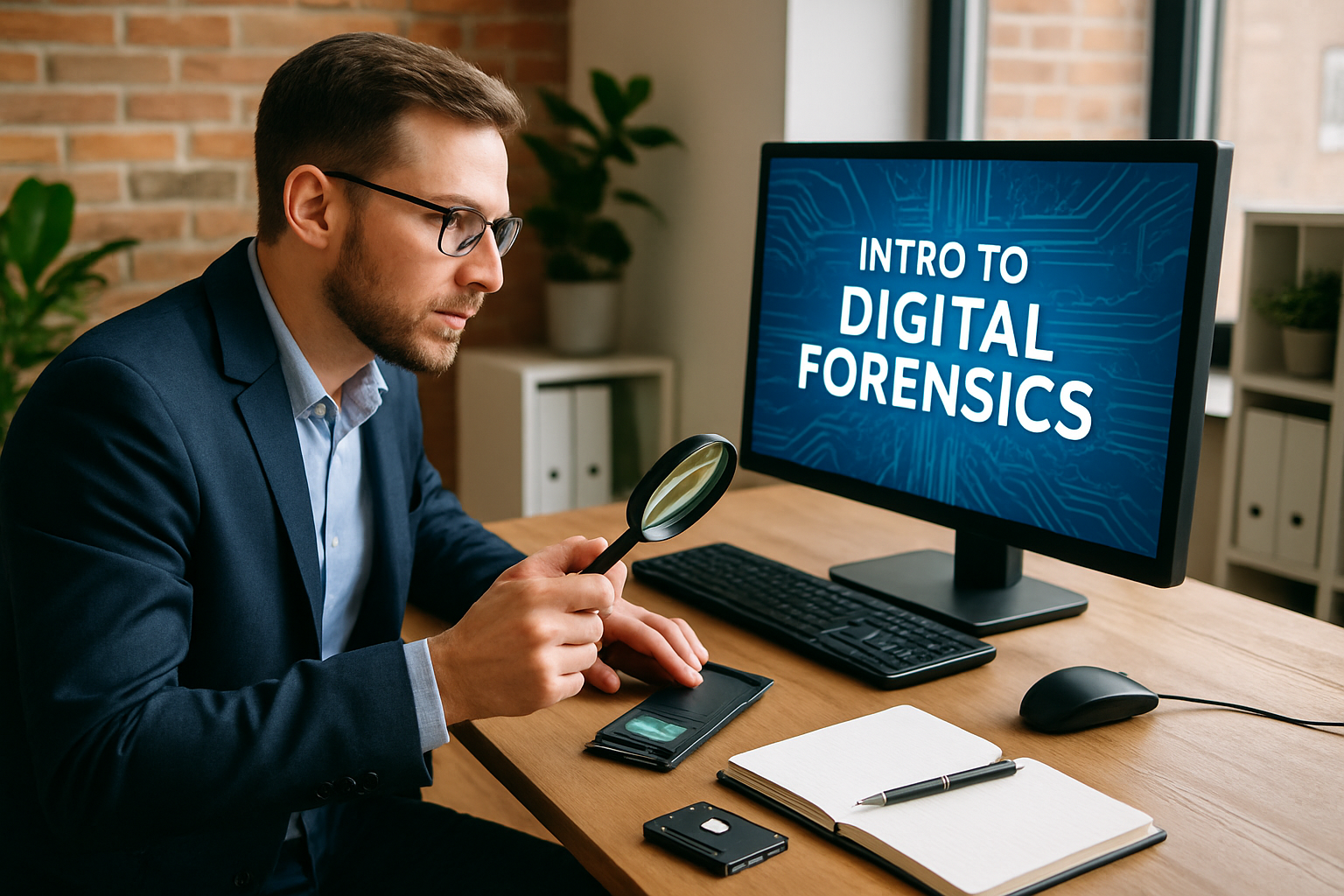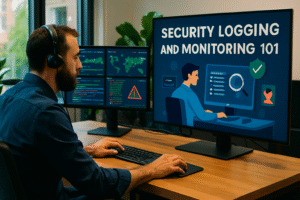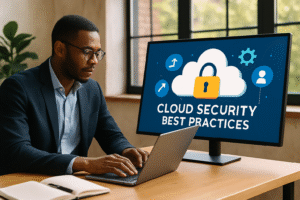
Intro to digital forensics
In the ever-evolving landscape of technology, understanding how digital evidence is gathered, preserved, and analyzed is no longer a niche skill. Digital forensics sits at the intersection of technology, law, and cybersecurity, playing a vital role in everything from criminal investigations to corporate compliance. Whether you’re a student, an early-career IT professional, or a curious educator, an introduction to digital forensics opens new pathways to problem-solving, critical thinking, and ethical vigilance.
What is Digital Forensics?
At its core, digital forensics is the process of identifying, preserving, analyzing, and presenting digital evidence in a manner suitable for legal or organizational review. Unlike traditional forensic science, which might focus on fingerprints or physical artifacts, digital forensics deals with data stored in computers, mobile devices, networks, or even the cloud.
The need for digital forensics has grown exponentially with the proliferation of digital devices. Every email sent, every file saved, every login attempt leaves a trail. Harnessing this trail to reconstruct events, demonstrate intent, or detect breaches is the essence of digital forensics.
If you’ve ever found yourself asking how investigators trace a deleted file or how organizations respond to cyberattacks, digital forensics provides the answers.
Key Areas of Digital Forensics
- Computer Forensics: Focuses on desktops, laptops, and servers, aiming to recover and analyze data from traditional computer systems.
- Mobile Device Forensics: Deals with smartphones, tablets, and other portable devices, extracting text messages, call logs, and application data.
- Network Forensics: Involves monitoring and analyzing network traffic to detect intrusions, data exfiltration, or policy violations.
- Cloud Forensics: Addresses the challenges of investigating data stored off-site in cloud services, requiring a blend of technical and legal expertise.
- Malware Forensics: Specializes in dissecting malicious software to understand its origin, purpose, and impact.
Why Digital Forensics Matters Now More Than Ever
Digital evidence is increasingly central to both criminal and civil cases. But its influence extends far beyond the courtroom. For organizations, digital forensics underpins incident response strategies—from investigating data breaches to ensuring regulatory compliance. In the personal sphere, it empowers individuals to protect their digital identities and assets.
As technology democratizes access to information, it also amplifies security risks. For historically underrepresented groups in tech, including women and neurodivergent learners, digital forensics offers an egalitarian field, rewarding diverse perspectives and a keen attention to detail.
The best digital forensic analysts are those who see patterns where others see chaos; who turn curiosity into actionable insight.
Actionable Example: Recovering Deleted Files
Let’s look at a practical example. Suppose an employee deletes sensitive files prior to leaving a company. How can digital forensics help?
- Imaging the Disk: The first step is to create a bit-by-bit copy of the storage device. This preserves the original evidence, ensuring no data is altered during analysis.
- File System Analysis: Deleted files aren’t immediately erased; instead, their space is marked as available. Using forensic tools, analysts can often recover these files unless they’ve been overwritten.
- Metadata Review: Analysts examine file metadata (creation, modification, access times) to build a timeline of actions.
- Reporting: Every step must be meticulously documented—chain of custody is paramount in digital investigations.
This process relies on a combination of technical skills and a deep understanding of operating systems, file storage, and data structures.
Essential Tools of the Trade
Digital forensics practitioners rely on specialized software and hardware tools to conduct investigations. Some of the most widely used include:
- EnCase: A comprehensive suite for disk imaging, file recovery, and reporting, widely used by law enforcement and corporations.
- FTK (Forensic Toolkit): Known for its speed and flexibility in searching large data sets, FTK is ideal for email analysis and file carving.
- Autopsy/Sleuth Kit: An open-source platform that supports a wide range of file systems and provides intuitive reporting features.
- Wireshark: For network forensics, Wireshark captures and analyzes network packets in real time.
- Magnet AXIOM: Especially popular for mobile device forensics, extracting data from iOS and Android devices.
Equally important are write blockers—hardware that prevents accidental modification of evidence disks during analysis—and secure lab environments that maintain the integrity of sensitive data.
Ethics and Legal Considerations
With great power comes great responsibility. Digital forensics must operate within strict ethical and legal guidelines. Analysts are accountable not only to their organizations or clients but also to the broader community. Privacy, data protection, and chain of custody are not just buzzwords; they are the foundation of trust in the digital age.
A single misstep—altering a file, failing to document a process—can render evidence inadmissible and undermine an entire investigation.
Understanding local, national, and international laws on data access and retention is crucial. For those working in cross-border contexts, such as cloud forensics, the legal complexities grow even more pronounced.
Getting Started: Learning Digital Forensics
Whether you’re a self-taught technologist, a neurodivergent learner, or someone returning to the workforce, the field of digital forensics welcomes a wide array of backgrounds. Here’s how to begin:
1. Build a Strong Foundation
Start with the basics of computer systems, operating systems, and networking. Understanding how data is stored, transmitted, and secured is essential. Free resources, online courses, and community-driven tutorials abound.
2. Practice with Real-World Scenarios
Set up a home lab using open-source tools like Autopsy or Kali Linux. Work through sample cases—recover deleted files, analyze network traffic, or examine system logs. The hands-on approach is invaluable.
3. Join the Community
The digital forensics community is vibrant and supportive. Engage with forums, attend webinars, or participate in Capture the Flag (CTF) challenges. Many organizations offer mentorship programs, especially for women and underrepresented groups in tech.
4. Keep Ethics at the Center
Practice responsible data handling, even in your own experiments. Respect privacy and confidentiality, and always document your processes.
Tips for Neurodivergent Learners
Digital forensics can be a welcoming field for neurodivergent individuals, including those with ADHD or autism. Here’s why:
- Detail orientation is a strength—spotting subtle anomalies can make all the difference in an investigation.
- Pattern recognition skills are highly valued, whether analyzing logs or reconstructing timelines.
- Many organizations embrace flexible work environments, supporting diverse learning and working styles.
If you’re neurodivergent, consider seeking out inclusive communities or mentors who understand and celebrate your unique perspective.
Career Pathways in Digital Forensics
Digital forensics offers a variety of career routes, each with its own blend of technical, analytical, and interpersonal skills. Common roles include:
- Forensic Analyst: Examines digital evidence, prepares reports, and may testify in court.
- Incident Responder: Investigates security breaches, containing and analyzing attacks.
- Malware Analyst: Dissects malicious software to understand its behavior and origins.
- eDiscovery Specialist: Assists with legal cases by identifying and preserving electronic evidence.
- Consultant: Advises organizations on security policies, compliance, and incident response.
Opportunities exist in law enforcement, private industry, government, and consulting. For women and other underrepresented groups, numerous scholarships, fellowships, and networking groups can smooth the path into this dynamic field.
Curiosity, integrity, and a willingness to learn are more important than any single technical skill.
Looking Forward: The Future of Digital Forensics
As technology advances, so too do the challenges and opportunities in digital forensics. Artificial intelligence (AI) and machine learning are beginning to automate aspects of evidence analysis, while quantum computing looms on the horizon, threatening to reshape data security as we know it.
At the same time, the proliferation of Internet of Things (IoT) devices, smart home systems, and wearables creates new sources of potential evidence—and new technical puzzles. Being adaptable and committed to continuous learning is essential.
For educators, integrating digital forensics into curricula can spark interest in STEM fields, encourage ethical technology use, and empower students from all backgrounds to become responsible digital citizens.
Actionable Tips for Aspiring Digital Forensics Professionals
- Stay current: Follow cybersecurity news, participate in online forums, and subscribe to digital forensics journals.
- Document everything: Good habits in record-keeping and process documentation are crucial for credibility.
- Network widely: Reach out to professional associations, attend conferences, and seek mentorship.
- Embrace diversity: Welcome a range of perspectives—whether from different disciplines, cultures, or neurotypes. Innovation thrives on diversity.
- Balance technical and soft skills: Communication, empathy, and ethical reasoning are just as important as technical know-how.
Digital forensics is not just about bits and bytes. It is about people, trust, and the stories data can tell.
Whether you’re drawn to the thrill of the investigation, the satisfaction of solving technical puzzles, or the opportunity to make a meaningful impact in the world, digital forensics welcomes you. The field is rich with possibilities for those who approach it with curiosity, rigor, and respect for both technology and humanity.


